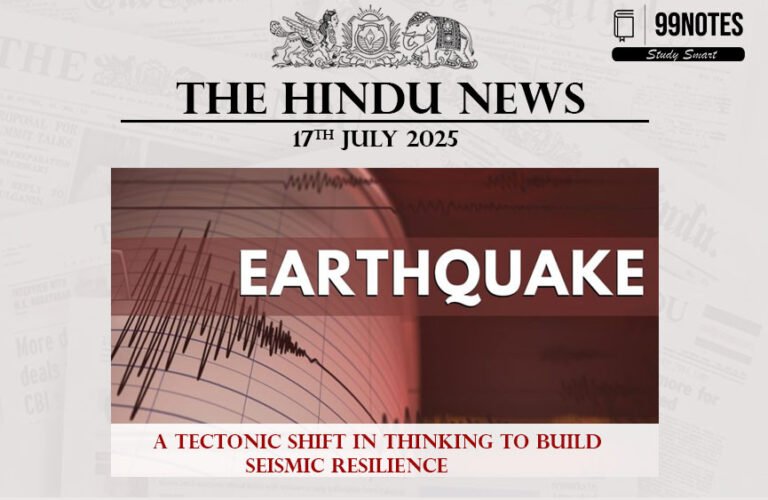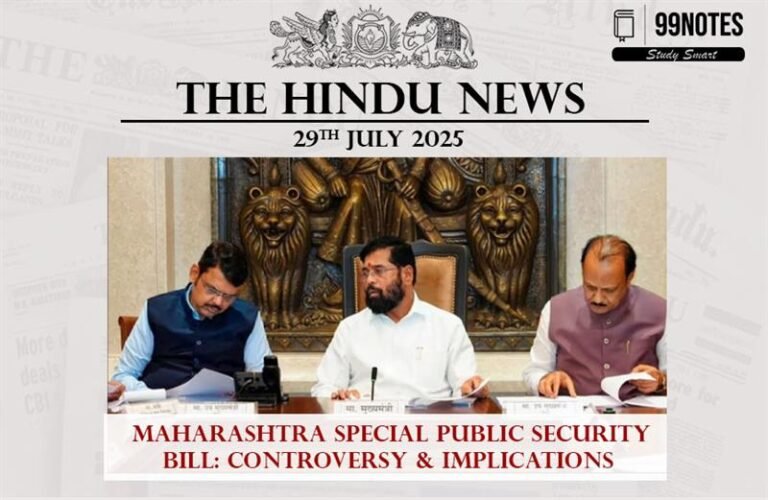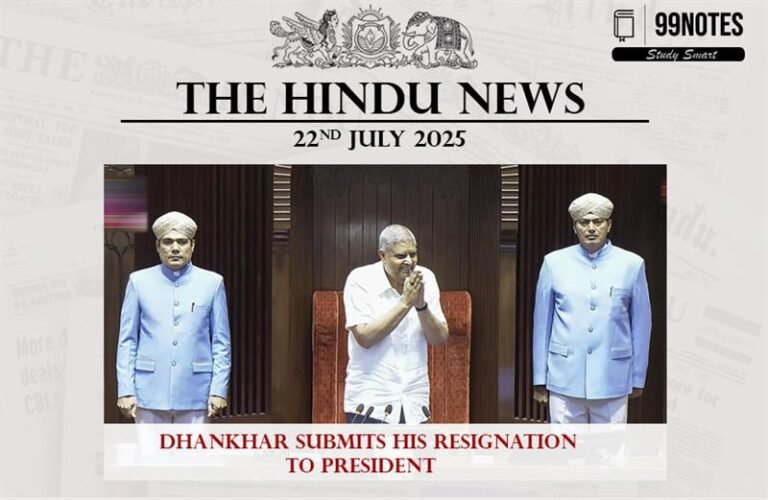4 Jan 2024 : The Hindu Editorial Noted Pdf
1. I-T searches, a form of extra-constitutional power.
| Topic: GS2 – Judiciary – Functioning.
Crucial for UPSC as it assesses understanding of constitutional principles, privacy rights, and judicial review in governance and law. |
| Context: |
|
Introduction:
- In August 2017, the Supreme Court of India, in Justice K.S. Puttaswamy vs Union of India, affirmed the fundamental right to privacy under the Constitution.
- The ruling aimed to usher in a new era of protecting civil liberties against arbitrary governmental excesses.
Prospects of Privacy Rights:
- The verdict placed the individual at the core of constitutional discourse, ensuring stringent scrutiny of state actions impinging on privacy.
- It signaled a shift towards a culture of justification, emphasizing principles like proportionality to safeguard fundamental rights.
Challenges in Statutory Interpretation:
- Despite the Puttaswamy ruling, statutory interpretation of rights has seen little change, often displaying a culture of judicial deference to executive authority.
- Section 132 of the Income Tax Act, granting extensive search powers to tax authorities, exemplifies the persistence of unchecked executive power.
Historical Context of Income Tax Law:
- The original 1922 income tax law lacked provisions for search and seizure, relying on civil court powers.
- Post-independence, the 1947 Taxation on Income (Investigation Commission) Act was struck down by the Supreme Court for violating equal treatment principles.
Search and Seizure Powers Examined:
- The 1961 reformation introduced Section 132, conferring search and seizure powers, challenged in Pooran Mal vs Director of Inspection (1973).
- The Court’s reliance on M.P. Sharma vs Satish Chandra, justifying unbridled state power, has since been reconsidered.
Proportionality Doctrine:
- The Puttaswamy judgment highlights the evolution in constitutional interpretation, emphasizing the right to privacy as intrinsic to personal liberty.
- The proportionality doctrine dictates that any intrusion on rights must serve a legitimate aim, be rationally connected to its goal, and lack less intrusive alternatives.
- However, the judiciary, under the Wednesbury principle, focuses on the honesty of belief rather than the proportionality and legitimacy of the search.
Post-Puttaswamy Imperatives:
- The Wednesbury rule has no place post-Puttaswamy, especially concerning fundamental rights.
- Constitutional canon demands strict adherence to statutory law, requiring warrants for searches to withstand rigorous judicial review.
Conclusion:
- Upholding the spirit of the Puttaswamy judgment is imperative for preventing executive overreach and safeguarding individual rights.
- A renewed focus on proportionality and a culture of justification can ensure that statutory powers, such as those in income tax laws, align with constitutional principles.
| Justice K.S. Puttaswamy vs Union of India Case |
|
| PYQ: Examine the scope of Fundamental Rights in the light of the latest judgement of the Supreme Court on Right to Privacy. (UPSC CSE (M) GS-2 2017) (250 words/15m) |
| Practice Question: How does the Puttaswamy verdict on the right to privacy impact the interpretation of statutory powers? Discuss with reference to the principle of proportionality. (250 words/15 m) |
2. The dispute on India’s debt burden.
| Topic: GS3 – Indian Economy – Government Budgeting.
Critical for UPSC as it assesses understanding of India’s fiscal challenges, global debt dynamics, and economic policy implications. |
| Context: |
|
IMF Observations:
- Concerns raised about long-term sustainability of India’s debts.
- Reclassification of India’s exchange rate regime from “floating” to “stabilised arrangement.”
Debt Sustainability Concerns:
- IMF projects India’s government debt could reach 100% of GDP by fiscal 2028.
- Emphasis on the need for prudent debt management amid climate change mitigation targets and resilience improvement.
Indian Government’s Response:
- Finance Ministry dismisses IMF projections as a “worst-case scenario,” not a fait accompli.
Global Debt Scenario:
- Global public debt increased fourfold since 2000, reaching a record $92 trillion in 2022.
- Developing countries, including India, account for a significant portion, with debt rising due to development needs, cost-of-living crisis, and climate change.
Asymmetric Debt Burden:
- Developing countries face higher interest rates, impacting debt sustainability.
- Number of countries with interest spending at 10% or more of public revenues increased from 29 in 2010 to 55 in 2020.
Credit Rating Challenges for India:
- India struggles to enhance credit ratings despite being the fastest-growing major economy.
- Consistent ‘BBB-‘ rating by Fitch Ratings and S&P Global Ratings since August 2006.
Debt Levels in India:
- Union government’s debt at ₹6 trillion, 57.1% of GDP, as of March 2023.
- State governments’ debt about 28% of GDP.
- Public debt-to-GDP ratio has barely increased from 81% in 2005-06 to 84% in 2021-22, back to 81% in 2022-23.
Fiscal Front Challenges:
- Possibility of fiscal slippage in FY24, attributed to higher expenditure on employment guarantee schemes and subsidies.
- Concerns about increased subsidies in an election year, affecting fiscal correction path.
Fiscal Responsibility and Budget Management Act (FRBMA):
- FRBMA specifies debt-GDP targets for the Centre, States, and their combined accounts at 40%, 20%, and 60%, respectively.
- Higher public debt levels than FRBMA targets.
Conclusion:
- Short-term fiscal challenges, particularly in an election year, need addressing to avoid worst-case scenarios projected by the IMF in the medium term.
| PYQ: What are the reasons for introduction of Fiscal responsibility and Budget Management (FRBM) act, 2003? Discuss critically its salient features and their effectiveness. (UPSC CSE (M) GS-3 2013) |
| Practice Question: How do the IMF’s concerns about India’s long-term debt sustainability impact economic policies? Discuss with reference to fiscal challenges and global debt dynamics. (150 words/10 m) |




